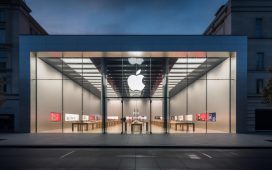Key Takeaways
- The M4 Mac Mini offers fast performance at the same low price point of $600.
- The base model finally includes 16GB of unified memory, but further upgrades are costly.
- You should consider sticking to the base model due to expensive upgrades, and potentially avoid buying Apple silicon Macs until RAM and storage upgrades become less cost-prohibitive.
Before it announced the M4 Mac Mini last week, Apple hadn’t made material changes to the all-in-one computer’s form factor in over a decade. For years, I couldn’t help but dream of what a Mac Mini could look like if Apple really tried to make it a compact mini PC. I even tore down my M2 Mac Mini when I reviewed it to show how much wasted space was inside, proving that, yes, the Mac Mini could be smaller. That’s why I was thrilled when I first laid eyes on the M4 Mac Mini, a five-by-five cube that finally included 16GB of base storage.

Related
Mac Mini (M2, 2023) review: You won’t find a better desktop for $600
It’s easy to see where Apple cut corners, however
After the brief honeymoon phase wore off, I realized that I could never buy the M4 Mac Mini. By upgrading the base-model Mac Mini to 16GB of unified memory for the same $600 starting price, Apple only addressed a symptom of a larger problem. Individual memory and storage upgrades are far too expensive for computers that are nearly impossible to upgrade after they’ve been purchased. For this reason alone, I can’t put my money toward the M4 Mac Mini — or any new Mac, for that matter — until Apple updates its pricing.
The 8GB vs 16GB debate was always the wrong issue
The cost of upgrades is far more impactful than the amount of base storage
For at least the past year, PC enthusiasts — and even some macOS users — have been fixated on the fact that base-model Apple silicon computers only shipped with 8GB of unified memory. It was a valid point of criticism, as many of the best phones featured more RAM than some of Apple’s best computers. In fact, when I tried to use an M2 Mac Mini with just 8GB of RAM for months, it didn’t go very well. There were memory limitations, specifically ones that only appeared long after my return window for the computer passed.
The problem was worsened by the fact that you can’t upgrade the memory of an Apple silicon Mac after it has been purchased. You need to have some degree of clairvoyance about how much RAM you’ll need; not just how much memory you will require today, but also three, five, or ten years in the future — depending on your Mac upgrade cycle. Storage is slightly better in that regard, because tinkerers like iBoff on YouTube have figured out ways to add aftermarket storage upgrades to Apple silicon Macs.
The real problem wasn’t that Mac computers shipped with 8GB of base memory and 256GB of base storage. It was that to upgrade a Mac computer to a reasonable amount of RAM and storage, you’d be paying an enormous amount of money beyond that device’s MSRP. In many ways, it felt like the starting price of recent Apple silicon Macs was slightly deceptive. A base model Mac might not last you a year or two, let alone three or five or ten.

Related
I used a Mac with 8GB memory for 9 months in 2024, here’s how it went
Is the starting amount of unified memory enough on Apple silicon in 2024? We tested it.
You shouldn’t buy anything but the base-model M4 Mac Mini
For $600, the base-model Mac Mini is a no-brainer
Apple’s redesigned and revamped M4 Mac Mini solves one, and exactly one, part of this problem. Now, you get 16GB of unified memory and 256GB of storage with every new Mac across the entire lineup. The M4 iMac, M4 Mac Mini, and M4 MacBook Pro ushered in the post-8GB RAM era for Apple, but it applies to devices without the M4 chip, too. That means we can actually recommend base model Apple devices. While 256GB of storage is less than I’d want in 2024, it can be enough when paired with external storage solutions (like the Satechi Stand & Hub) or cloud storage services.

Related
Satechi Stand & Hub for Mac review: The perfect companion for Mac mini or Mac Studio
If you’re looking for a way to add expandable storage to your Mac mini or Mac Studio, this is the cleanest way to do it.
However, the base-model M4 Mac Mini is the only version of the Mac Mini I’m comfortable recommending. At $600, it’s a pretty killer value. But bumping the RAM by eight gigabytes, from 16GB to 24GB, results in a $200 increase. Want an M4 Mac Mini with 32GB of RAM and 512GB of storage? (A relatively modest configuration these days.) That’ll be a whopping $1,200, exactly double the price of the base-model M4 Mac Mini. You can buy another whole computer for the price you’ll pay for Apple to give you just 16GB more memory and 256GB more storage.
I don’t know if you’ve been following the prices of the best RAM sticks or the best SSDs, but the above prices are outlandish compared to the offerings in the PC world. You’re paying the so-called “Apple tax” for RAM and storage configurations above the base amounts, and at an extreme level. I’m ready to say enough is enough — I won’t pay the Apple tax for RAM and storage upgrades this time around. If you can get by with 16GB RAM and 256GB of storage, sure, the M4 Mac Mini will be a steal at $600. For everyone else, the value of Apple silicon Macs begins to quickly taper off the moment you need to choose a custom configuration.

Apple Mac mini (M4, 2024)
At $600, the M4 Mac Mini gives you fast performance in a tiny form factor. It’s a killer value, and I’m confident of that even before it officially releases. However, the second that you need to make upgrades to your M4 Mac Mini’s configuration, it becomes a tougher sell.












